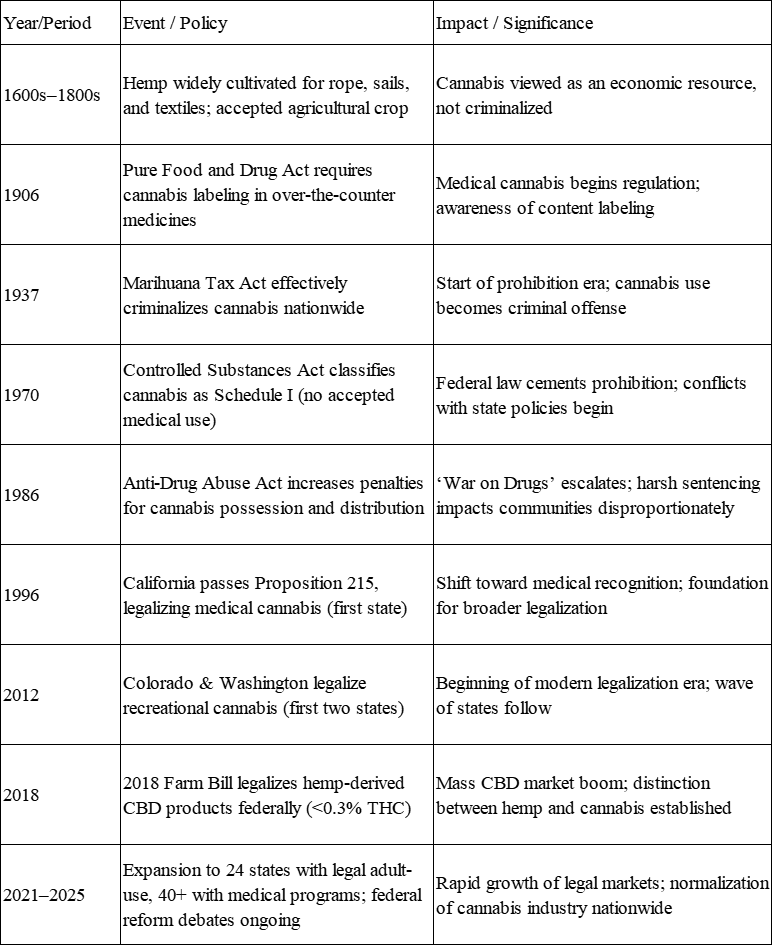Cannabis representation in film and television has undergone a remarkable transformation over nearly a century, evolving from the hysterical propaganda of the 1930s to nuanced portrayals that reflect society’s changing attitudes toward marijuana. This journey mirrors broader cultural shifts around cannabis, from criminalization to growing acceptance and legalization. Through examining key films, television shows, and cultural moments, we can trace how media has both reflected and shaped public perception of cannabis, demonstrating the profound power of entertainment to influence social attitudes and policy discussions.
The Birth of Anti-Cannabis Propaganda (1930s-1950s)
The earliest cannabis films emerged during the 1930s as explicit propaganda tools designed to demonize marijuana use, characterized by exaggerated portrayals that linked cannabis to violence, insanity, and moral corruption. The Reefer Madness campaign of the 1930s was deeply rooted in racial bias and government control efforts. Harry Anslinger, the first Commissioner of the Federal Bureau of Narcotics, was instrumental in orchestrating this propaganda campaign, using racist language and propaganda to position marijuana as the nation’s most dangerous drug. The campaign strategically linked cannabis use to marginalized communities, particularly “Blacks, Latinos, jazz musicians, and juvenile delinquents to racial miscegenation and homicidal mania”.
Films like “Reefer Madness” (1936), “Marihuana” (1936), and “Assassin of Youth” (1937) followed similar formulas, presenting cannabis as a gateway drug that inevitably led to criminal behavior. These productions shared common themes: cannabis use resulting in violence, sexual promiscuity, and death, often targeting innocent victims who were unknowingly exposed to the drug. The anti-cannabis hysteria of this era wasn’t merely about public health—it served broader political purposes. Anslinger recognized that anti-cannabis legislation could expand the scope and influence of the Federal Bureau of Narcotics. This campaign culminated in the Marihuana Tax Act of 1937, which effectively criminalized cannabis nationwide.
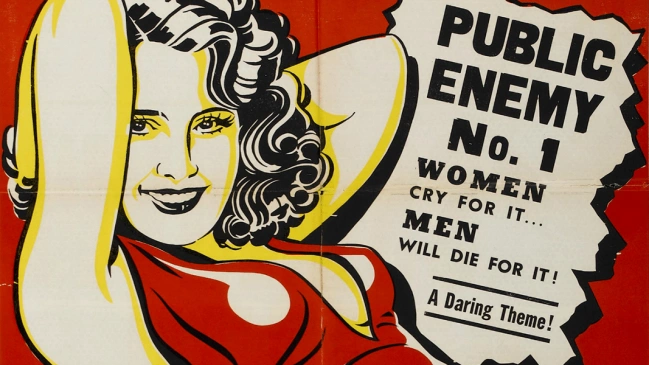
Strategic Language and Lasting Impact
The government’s choice to use the term “marijuana” rather than “cannabis” was deliberate, maintaining the drug’s negative reputation and association with Mexico. This linguistic strategy reinforced xenophobic attitudes while distancing the substance from its medical and industrial applications. The lasting impact of this propaganda era cannot be overstated. As one analysis notes, “Cannabis remained illegal for decades, and the War on Drugs, initiated in the 1970s, continued to disproportionately affect minority communities”. The propaganda films of the 1930s established narrative frameworks that would persist for generations, creating stereotypes and fears that would take decades to overcome.
The Counterculture Revolution: Cannabis as Symbol of Freedom (1960s-1970s)
However, the 1960s and 1970s marked a dramatic shift in cannabis representation, transforming from cautionary tales to symbols of rebellion and freedom as cannabis became intertwined with broader social movements and countercultural identity. “Easy Rider” (1969) represented a watershed moment in cannabis cinema, directed by Dennis Hopper and showcasing protagonists whose journey across America was “fueled by marijuana and a desire for freedom”. The filmmakers capitalized on the repeal of the Hays Code in 1968, which had previously restricted drug use depictions in films.
With the introduction of the MPAA rating system, “Easy Rider” embraced candid depictions of drug use without moral judgment, turning it into a cultural phenomenon. Hopper justified the drug use by arguing that “it would be unrealistic for these two young men in America not to smoke pot”. This marked a fundamental shift from the moralizing tone of earlier decades to a more naturalistic approach that reflected actual youth behavior.
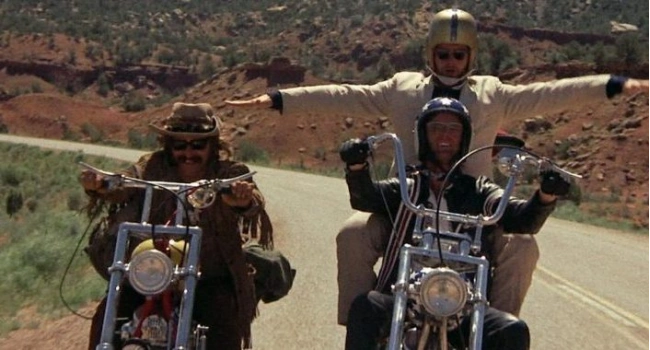
Cannabis as Cultural and Political Symbol
During this era, cannabis deeply influenced the music, movies, and art of the 70s. Iconic musicians like Bob Marley and bands such as The Grateful Dead used their platforms to advocate for marijuana use, integrating it into their music and public personas. The plant became more than just a recreational drug; it was a symbol of resistance against the status quo and a tool for exploring new dimensions of consciousness. The counterculture movement positioned cannabis use within broader social justice contexts, with cannabis becoming associated with “anti-military, anti-nuclear power, anti-big business, anti-authority demonstrations”, representing dissenting positions toward government initiatives.
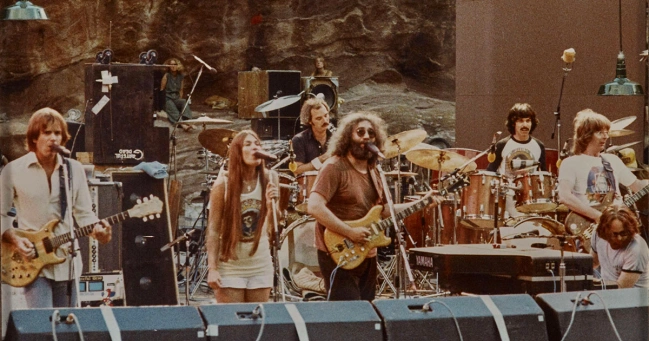
The Birth of Stoner Comedy
The 1978 release of Cheech & Chong’s Up in Smoke marked the moment when cannabis humor crystallized into its own cinematic niche. Shot for under $1 million and ultimately grossing more than $104 million, the film turned a loose road-trip plot—complete with a van literally made of marijuana—into a showcase of laid-back slapstick, irreverent counter-culture gags, and pot-fueled sight jokes. Critics were divided, but audiences embraced the movie’s anything-goes spirit, and its box-office success is widely credited with establishing the modern “stoner comedy” template. The Library of Congress underscored that cultural impact by adding the film to the National Film Registry in 2024, citing its historical and aesthetic significance.
Cheech Marin and Tommy Chong brought rare authenticity to the screen because they had spent the previous decade building a stage act—and several Grammy-nominated comedy albums—around their real-life experiences as counterculture “heads.” Long before Hollywood courted them, the pair toured North America with sketches that lampooned drug laws, racial stereotypes, and authority figures, giving them an instinctive feel for the improvisational rhythm of stoner banter. Their on-screen personas—Pedro De Pacas and “The Man”—were not invented characters but exaggerated versions of themselves, which made their pot-smoking escapades feel both outrageous and oddly relatable to late-1970s audiences steeped in hippie culture.
By centering affable slackers as heroes and portraying law-enforcement antagonists as harmless buffoons, Up in Smoke inverted decades of drug-scare narratives and laid down tropes that still define the genre: the endless quest for a joint, the misadventures sparked by the munchies, and the comedic juxtaposition of relaxed stoners against a frantic straight-laced world. Films from Fast Times at Ridgemont High to Pineapple Express trace their DNA to this blueprint, while contemporary comedians cite Cheech & Chong’s free-form style as proof that cannabis humor can sustain entire franchises. In short, the duo didn’t just star in the first mainstream stoner comedy—they built the playbook that generations of filmmakers continue to riff on.
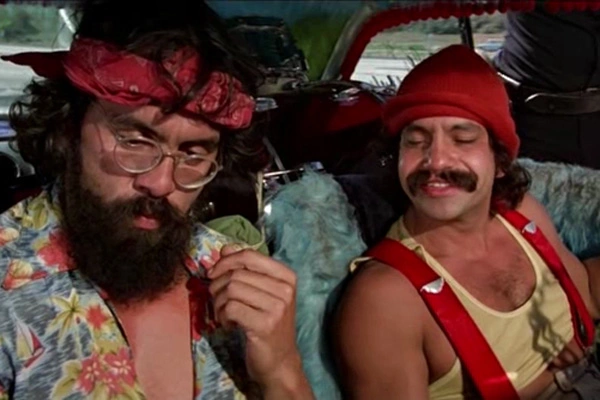
Mainstream Comedy and Diversifying Narratives (1980s-2000s)
Building on the foundation laid by Cheech and Chong, the 1980s through 2000s saw cannabis representation evolve from counterculture symbol to mainstream comedy fodder, with increasingly diverse portrayals that began challenging traditional stereotypes. “Fast Times at Ridgemont High” (1982) introduced cannabis into teenage coming-of-age narratives, while films like “Friday” (1995) and “Half Baked” (1998) brought greater diversity to cannabis representation. These films moved beyond the hippie archetype to show cannabis use across different communities and social contexts.
The Cheech and Chong formula continued to influence modern media, with their impact visible in later productions as Ice Cube has acknowledged partially modeling his iconic stoner film “Friday” after Cheech and Chong, demonstrating the lasting influence of their comedic approach.
Breaking Racial and Ethnic Barriers
A significant milestone in cannabis representation came with “Harold & Kumar Go to White Castle” (2004), which centered Asian American protagonists. The film subverted audience expectations and symbolically retold the Asian American experience through the lens of a buddy stoner comedy. This represented a crucial departure from typical stoner comedy protagonists, offering Pan-Asian unity through the pairing of Korean American and Indian American characters. The film accomplished something remarkable by making ignorance the subject of comedic ridicule, which flipped the script of minority groups being the basis of comedy due to their race. Rather than perpetuating stereotypes, it used cannabis culture as a vehicle for commenting on the Asian American experience and challenging racist ideologies.
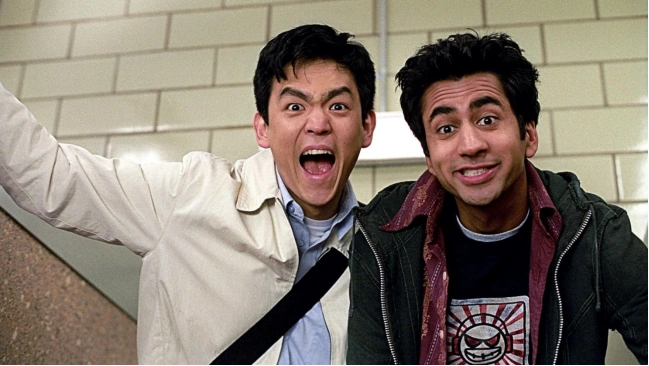
Television’s Conservative Response
While film was progressing toward more inclusive representations, television during the 1980s maintained a more conservative stance. This period saw D.A.R.E.-influenced “very special episodes” that continued to portray cannabis use negatively. Television programming often featured hyperbolic portrayals serving educational purposes, representing a pendulum swing back toward negative depictions even as film was moving toward normalization. Shows like “Dragnet” continued perpetuating old stereotypes despite changing cultural attitudes. This disconnect between film and television would persist until the early 2000s, when television began catching up with more progressive representations.
Television’s Golden Age: Complex Narratives and Social Commentary (2000s-2010s)
The 2000s and 2010s marked television’s emergence as the primary platform for sophisticated cannabis narratives, with groundbreaking series that explored complex themes around drug policy, family dynamics, and social justice. “Weeds” (2005-2012) was a watershed moment for cannabis representation on television, following Nancy Botwin, a widowed suburban mother who turns to selling cannabis to support her family after her husband’s sudden death leaves her financially vulnerable. Created by Jenji Kohan, the show offered a dark comedic take on the cannabis industry while simultaneously deconstructing the myth of suburban perfection. Set initially in the fictional upscale community of Agrestic, California, the series used Nancy’s transformation from PTA mom to drug dealer as a vehicle to examine class anxiety, economic desperation, and the lengths people will go to maintain their lifestyle. The show’s premise was revolutionary because it placed cannabis dealing within the context of middle-class survival rather than criminal pathology or counterculture rebellion.
Unlike previous portrayals that relied heavily on stoner stereotypes or criminalized archetypes, “Weeds” helped break stereotypes around cannabis users, showing that people from all walks of life could be involved with cannabis—whether as consumers or businesspeople. The series featured a diverse cast of characters that included suburban housewives, city councilmen, DEA agents, Mexican cartel members, and corporate executives, all connected through the cannabis trade in various ways. Nancy’s clientele ranged from soccer moms seeking stress relief to high-powered executives looking for creative inspiration, demonstrating that cannabis consumption crossed all demographic boundaries. The series delved into the complexities of the cannabis trade, exploring everything from the underground market to legalization and corporate involvement. As the show progressed through eight seasons, it traced the evolution of cannabis from a suburban side hustle to a multi-billion-dollar industry, anticipating real-world developments in legalization and commercialization by several years.
This represented a significant evolution from simple stoner comedy to complex social commentary. The show didn’t shy away from the darker consequences of drug dealing, showing how Nancy’s choices affected her relationships with her children, friends, and community. Over its run, “Weeds” explored themes of addiction, violence, corruption, and moral compromise while maintaining its satirical edge. The series was particularly prescient in its portrayal of the tension between illegal dealers and the emerging legal cannabis industry, with later seasons showing how corporate interests and government regulation would reshape the marijuana landscape. As one analysis noted, “Weeds shows its viewers that it’s an amazing substance that can bring you to an elite life, or it can destroy a family, a business, friends”. This moral ambiguity—presenting cannabis as neither wholly good nor evil but as a commodity that amplifies existing human flaws and desires—marked a sophisticated approach that influenced subsequent television narratives about drugs and helped establish the template for prestige television’s treatment of morally complex protagonists in series like “Breaking Bad” and “The Sopranos.”
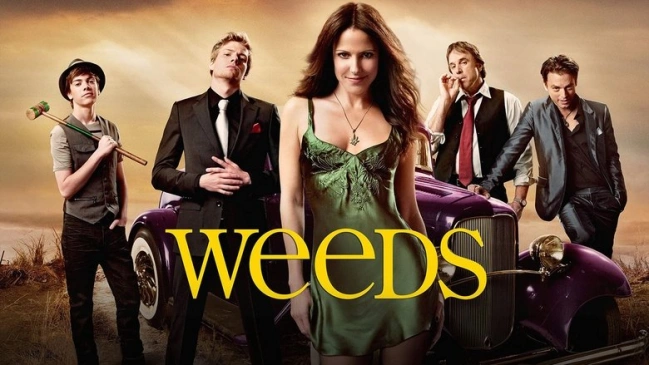
Contextualizing Cannabis Within Broader Drug Culture
“Breaking Bad” (2008-2013) provided a different perspective, placing cannabis within the broader context of the illegal drug trade. While focused primarily on methamphetamine, the show explored the darker side of drug use and the illegal drug trade. The contrast between cannabis and methamphetamine was notable: “Marijuana, like in Weeds, is just not as offensive. You do not ever truly believe… Nancy is destroying the lives of those who use her product. In Breaking Bad, you do”. This distinction helped audiences understand different levels of drug-related harm and complexity.
The Normalization Movement
A crucial development during this period was the emergence of shows where cannabis became a background element rather than the central plot device. “Broad City” (2014-2019) exemplified this approach, featuring two best friends navigating life in New York City—and cannabis was a natural part of their lives. The show demonstrated the casual and normalized way in which cannabis use could be depicted, reflecting a growing trend of portraying it as a routine part of life, rather than something illicit or taboo. This normalization extended to workplace comedies like “Disjointed” (2017), which mixed workplace comedy with cannabis culture, offering a fun and lighthearted look at the day-to-day operations of a cannabis business.

Documentary Advocacy and Historical Context
The period also saw increased documentary coverage exploring cannabis from historical and policy perspectives, with filmmakers using the medium to challenge decades of misinformation and advocate for reform. Grass is Greener (2019) offered an unparalleled look at the racially biased history of the war on marijuana, tracing the roots of cannabis prohibition from Harry Anslinger’s 1930s propaganda campaigns to the modern era of mass incarceration. The film examined glaring racial disparities in the growing cannabis market, revealing stark statistics that showed Black Americans were nearly four times more likely to be arrested for cannabis possession despite similar usage rates across racial groups, while white entrepreneurs dominated the emerging legal cannabis industry.
By connecting cannabis policy to broader social justice issues, Grass is Greener exposed how the War on Drugs facilitated mass incarceration, broke up families, and perpetuated economic inequality in communities of color. Combining archival footage, expert interviews, and cultural analysis, the documentary served as both entertainment and advocacy, making a compelling case for criminal justice reform and reparative justice in cannabis legalization. Its influence extended to other documentaries of the period, such as The Legend of 420 and Rolling Papers, which also used historical context and personal narratives to push for policy change. By framing these arguments through popular culture and featuring respected artists as moral authorities, these films helped shift public discourse on cannabis from personal morality debates to systemic justice and historical accountability.
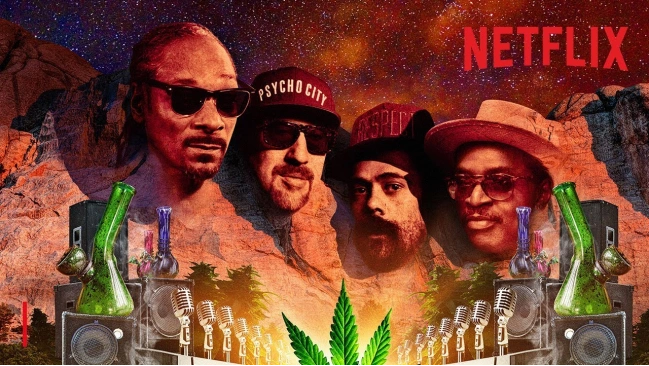
The Modern Era: Sophisticated Storytelling and Social Awareness (2010s-Present)
The modern era of cannabis representation coincides with widespread legalization efforts and reflects increasingly nuanced understanding of cannabis culture, policy, and social impact. “High Maintenance” represents perhaps the most sophisticated approach to cannabis storytelling in modern media. Rather than focusing on cannabis itself, the show explores the anxieties that drive people to light up in the first place. As creators Ben Sinclair and Katja Blichfeld explained, “Early on, we said, ‘Let’s not focus on the weed — let’s focus on the reason why people smoke weed'”.
Human Stories Over Substance Focus
The show follows a Brooklyn cannabis dealer known only as “The Guy,” but it turns out High Maintenance isn’t about weed or even the stoners who smoke it. Instead, it’s about the anxieties that drive people to light up in the first place. Each episode explores specific urban challenges: “How do you humanely kill a mouse in your kitchen? What happens when you move so deep into Brooklyn that your friends will no longer visit you?” The creators deliberately designed the dealer as “the empty space around which the rest of the fragmented, flawed community revolves”. This narrative structure allows the show to examine “difficult relationships, stunted aspirations and sexual identity” through the lens of cannabis transactions.
Modern cannabis media has moved far beyond simple stoner stereotypes, with “High Maintenance” centering multi-layered stories featuring complex characters who happen to use cannabis. The show portrays cannabis users differently than previous shows, moving away from the damaged or criminal archetypes toward more balanced and nuanced representations.
Media’s Role in Cultural and Policy Transformation
Generational Shifts
Media representations have facilitated important generational conversations about cannabis, serving as a bridge between older Americans who grew up during peak prohibition messaging and younger generations who came of age during the normalization era. The media portrayal of cannabis has changed significantly over the past 20 years. From being demonized and criminalized, cannabis is now portrayed as a more normalized aspect of adult life, appearing in everything from workplace sitcoms to family dramas without the moral panic that characterized earlier decades.
This shift has been particularly evident in how different generations consume and interpret cannabis content—while Baby Boomers might view shows like “Weeds” through the lens of their own 1960s counterculture experiences, Millennials and Gen Z audiences see cannabis use in shows like “Broad City” or “High Maintenance” as simply another lifestyle choice, no different from drinking wine or practicing yoga. Television programming has increasingly featured multi-generational families discussing cannabis openly, with shows depicting grandparents sharing edibles with adult children or parents explaining their medical marijuana use to teenagers, conversations that would have been unthinkable in mainstream media just two decades ago.
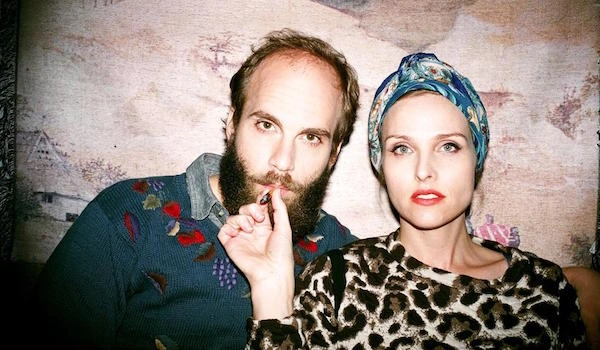
Celebrity Influence
Celebrity advocacy has amplified these changes, as celebrities like Snoop Dogg and Wiz Khalifa tapped in on the changing narrative and began to openly talk about their cannabis use. However, the celebrity influence extends far beyond hip-hop artists to include figures like Martha Stewart (who partnered with Snoop Dogg on cannabis ventures), Whoopi Goldberg (who launched a cannabis company focused on menstrual relief), and Melissa Etheridge (who became a vocal advocate for medical marijuana after using it during cancer treatment).
This mainstream celebrity engagement helped legitimize cannabis culture beyond counterculture boundaries, with stars appearing on talk shows, cooking shows, and lifestyle programs to discuss cannabis in the same casual manner they might discuss wine or fitness routines. The impact was particularly significant when celebrities shared their medical cannabis stories—figures like Montel Williams discussing cannabis for multiple sclerosis treatment or Michael J. Fox’s advocacy for cannabis research helped shift public perception from recreational indulgence to legitimate medical intervention. Social media has amplified this influence exponentially, with celebrities posting cannabis content to millions of followers, normalizing use across demographic lines and geographic regions that might otherwise remain resistant to cannabis acceptance.
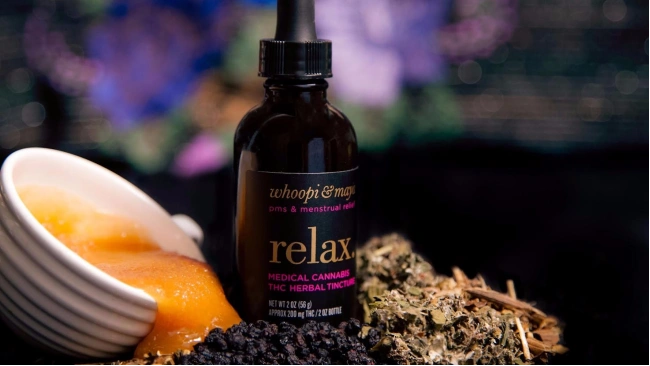
Policy Impact and Economic Arguments
Media representations have directly influenced legalization debates and policy discussions, with news stories about the booming cannabis industry and the millions of dollars in tax revenue generated by legal sales becoming common, providing economic arguments that proved more persuasive to skeptical voters than moral or medical arguments alone. Television news programs began featuring regular segments on cannabis business success stories, from small-scale craft growers to major corporate investments, while business networks like CNBC started tracking cannabis stocks and industry trends with the same seriousness as traditional sectors.
This media coverage transformed cannabis from a social issue into an economic opportunity, with local news stations highlighting how cannabis tax revenue funded schools, infrastructure projects, and social programs in legalization states. Documentary series like “Marijuana: A Chronic History” and “Weed the People” provided in-depth economic analysis showing how prohibition costs taxpayers billions in enforcement and incarceration while legalization generates substantial revenue streams, arguments that resonated with fiscally conservative voters who might oppose cannabis on moral grounds but support it on economic ones.
The shifting representation of cannabis in film, TV, and pop culture has played a significant role in destigmatizing the plant and widening mainstream acceptance, creating a feedback loop where positive media portrayals influenced public opinion, which in turn influenced electoral outcomes and legislative priorities. Political consultants began noting that voters in states with legal cannabis were significantly more likely to view cannabis positively in media, suggesting that entertainment content helped normalize the concept of regulated cannabis markets. This media influence became particularly evident during ballot initiative campaigns, where legalization advocates could point to popular television shows and films as evidence that cannabis use was already widely accepted in mainstream culture. The economic arguments presented in media coverage also provided political cover for lawmakers who wanted to support legalization but feared voter backlash—by framing legalization as a business opportunity and tax revenue generator rather than a moral issue, media representations helped politicians justify their positions to conservative constituents. Studies of media coverage during legalization campaigns showed that economic framing in news stories and entertainment content was more effective at swaying undecided voters than social justice arguments, demonstrating the practical policy impact of how cannabis stories are told in mainstream media.
Conclusion: From Prohibition to Progress
The remarkable journey from “Reefer Madness” to mainstream acceptance demonstrates media’s power to both reflect and shape social attitudes. Cannabis representation has evolved from crude propaganda through counterculture celebration to sophisticated contemporary narratives that explore complex social, economic, and personal themes. As cannabis normalization continues, the importance of authentic, diverse representation becomes even more critical. Future storytelling must ensure that the benefits of legal cannabis culture are shared equitably and that media representation reflects the full diversity of cannabis users and their experiences.
The ongoing evolution of cannabis in film and television will continue serving as both entertainment and social barometer, helping society navigate the complex transition from prohibition to acceptance while addressing the lingering inequities and challenges that remain part of this cultural transformation. As we move forward, the entertainment industry bears the responsibility of telling these stories with nuance, authenticity, and awareness of their power to influence public perception and policy in an increasingly complex and evolving landscape.
